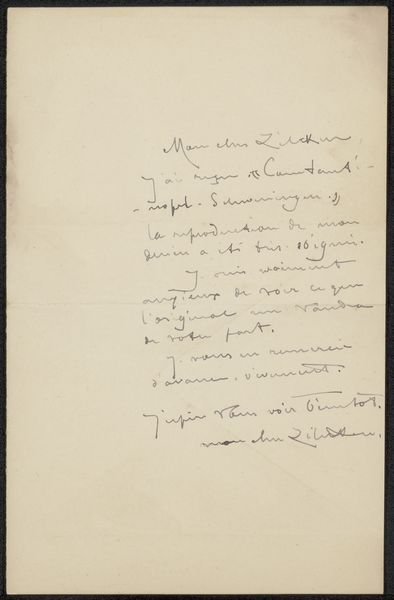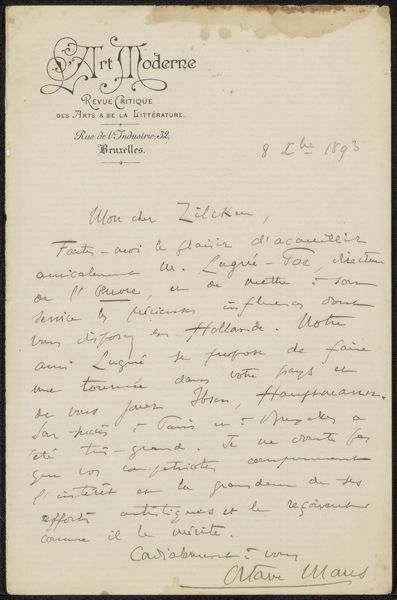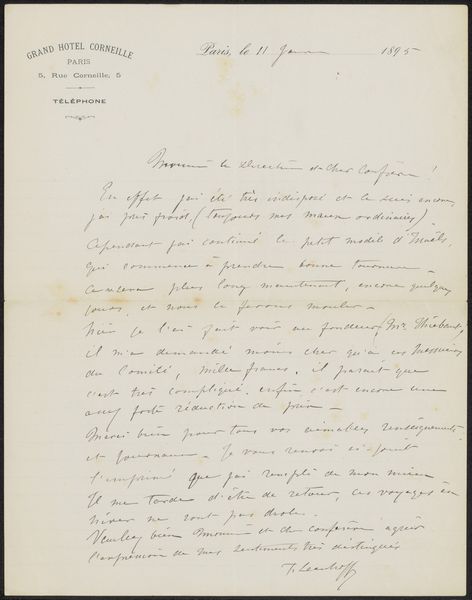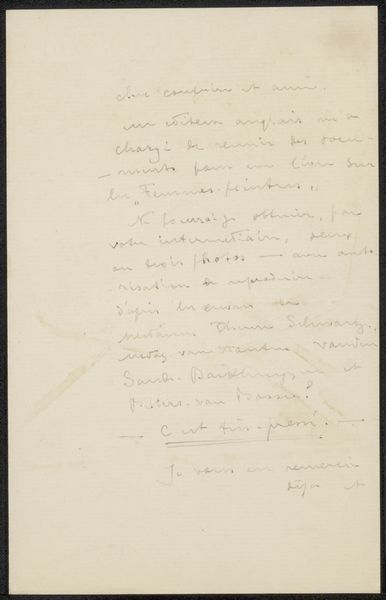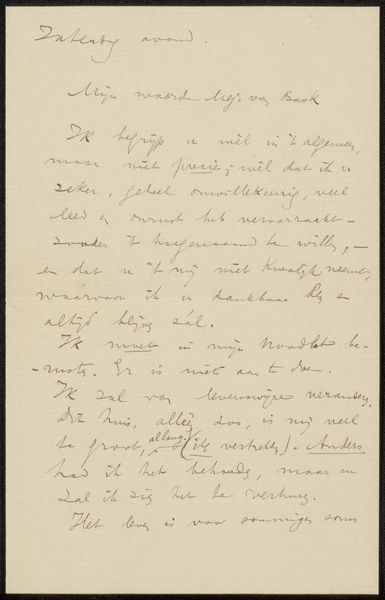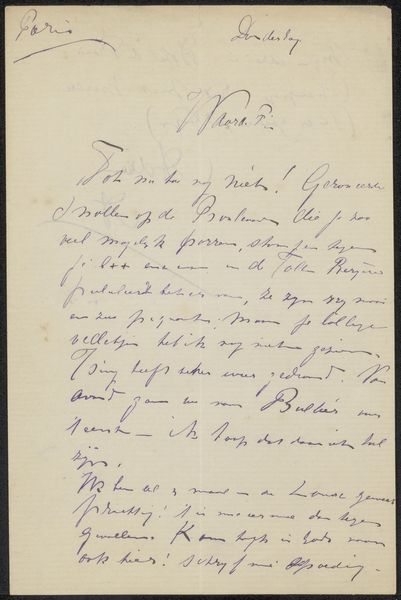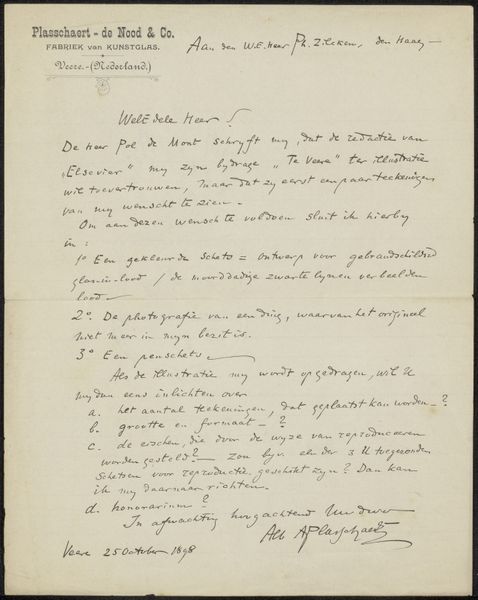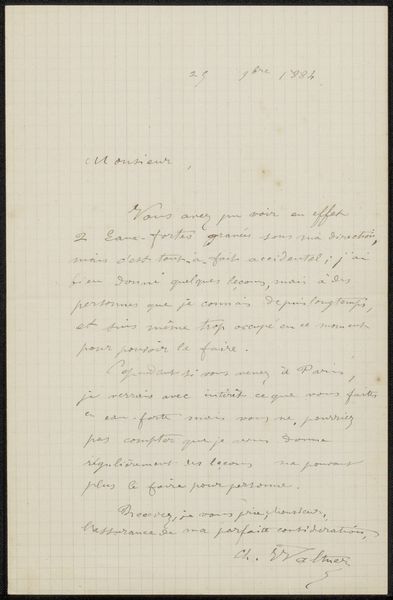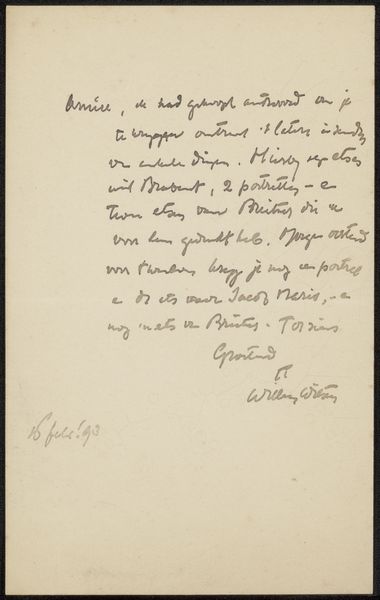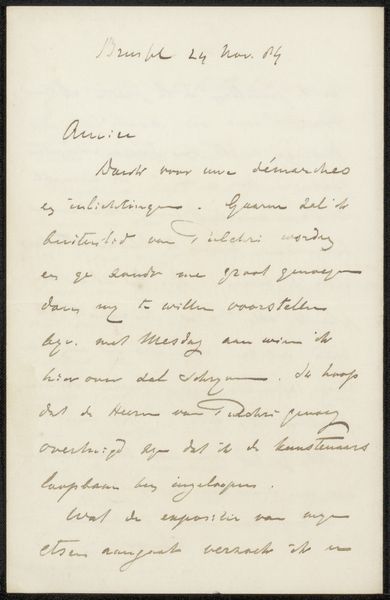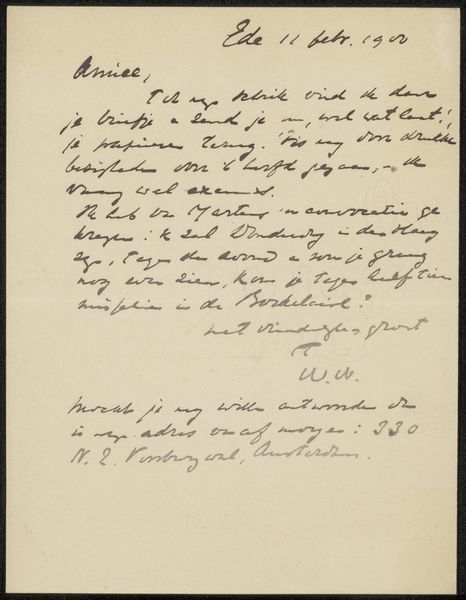
drawing, paper, ink, pen
#
drawing
#
ink paper printed
#
pen sketch
#
hand drawn type
#
paper
#
personal sketchbook
#
ink
#
ink drawing experimentation
#
pen-ink sketch
#
ink colored
#
pen work
#
symbolism
#
sketchbook drawing
#
pen
#
sketchbook art
#
calligraphy
Copyright: Rijks Museum: Open Domain
Curator: This is "Brief aan Philip Zilcken," or "Letter to Philip Zilcken," created by Fernand Khnopff, likely before 1917. It's an ink drawing on paper. What strikes you about it? Editor: The immediate feeling is intimacy, almost secrecy. The script is delicate, pale ink on paper, giving it a fragile presence. It seems very personal, wouldn't you agree? Curator: Indeed. Khnopff, a key figure in the Symbolist movement, often used symbols of introspection. Letters, even fragments of letters, carry weight, as tangible forms of thought and connection across time. Editor: Yes, and the way the words cascade down the page…there's a deliberate looseness to the composition, even though it's clearly structured. It's like he's allowing us a peek into his creative process. Curator: Think about the role letters played at the turn of the century. This wasn’t a quick email, but a carefully considered communication, often bearing personal meaning beyond the written words themselves. Editor: So it acts as both message and symbol? The script itself becomes significant, almost divorced from its literal content, especially considering the context of symbolism with which you characterize Khnopff? Curator: Exactly. Consider handwriting analysis or graphology. For some, each flourish of the pen reveals aspects of the writer's personality. It all speaks to a deeper layer. Also, the inclusion of what looks like names after the body could suggest either social ties or influence on the artist’s thinking during its creation. Editor: True. Well, I must admit, even absent knowledge of the Symbolist intent, its quiet composure drew me in, sparking contemplation regarding what may lie hidden beneath such seemingly transparent penmanship. Curator: For me, reflecting on such epistolary remnants reminds me of the hidden archives behind what we perceive as linear historical narratives. It is also how meaning continues to resonate even outside its original exchange.
Comments
No comments
Be the first to comment and join the conversation on the ultimate creative platform.
